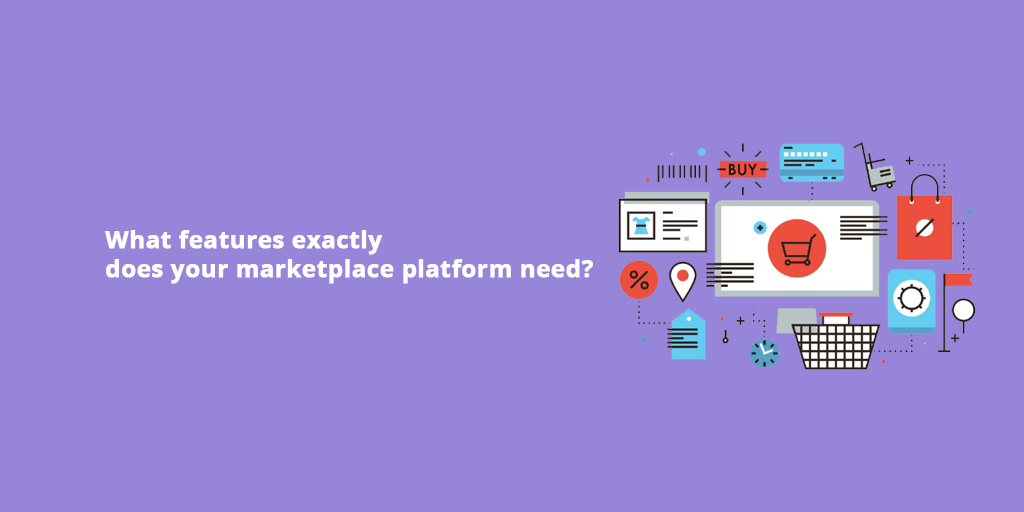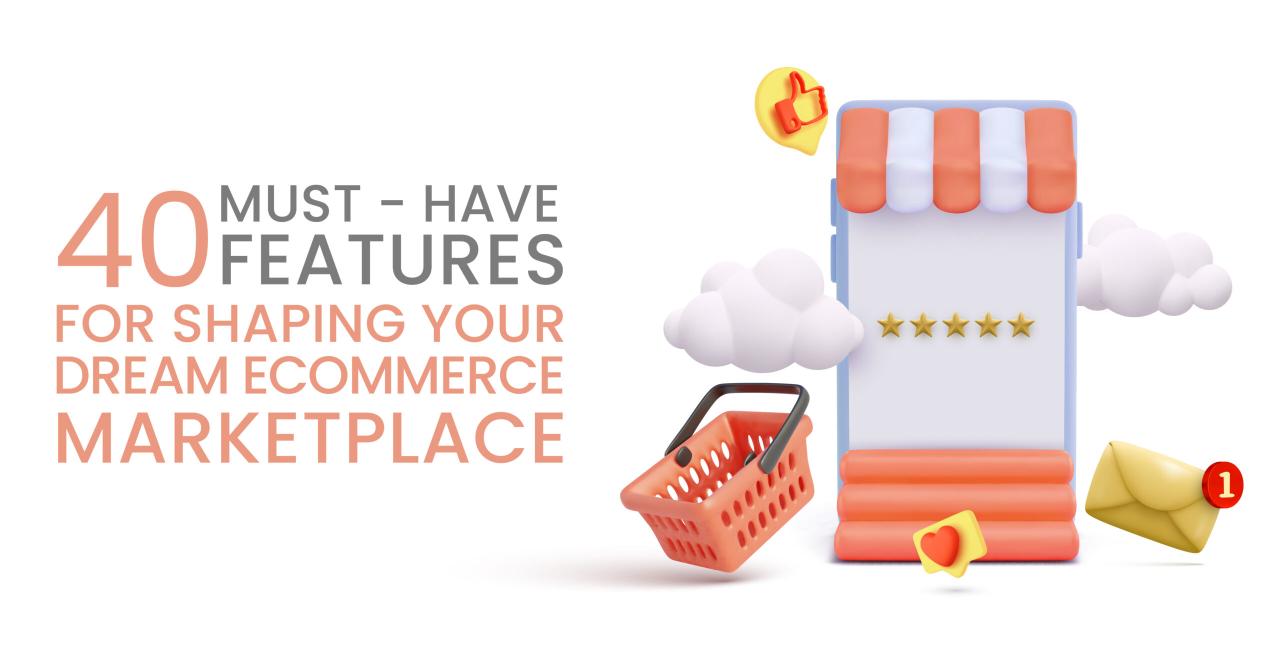
6 Capabilities Every Marketplace Needs
6 Capabilities Every Marketplace Needs: Building a thriving online marketplace isn’t just about connecting buyers and sellers; it’s about creating a secure, user-friendly, and efficient ecosystem. This post dives into the six crucial capabilities that form the backbone of any successful marketplace, from robust security measures to seamless dispute resolution. We’ll explore each element, providing insights into best practices and essential considerations for your own marketplace development.
Think of these six capabilities as the pillars supporting your entire marketplace structure. Get them right, and you’re well on your way to building a platform that’s not only profitable but also trusted and enjoyable for everyone involved. We’ll cover everything from securing payments and verifying user identities to optimizing product discovery and handling inevitable disputes. Let’s get started!
Secure Payment Gateway Integration
Building a successful online marketplace hinges on trust, and a crucial element of that trust is a secure and reliable payment system. A robust payment gateway integration is not just a feature; it’s the backbone of your marketplace’s financial health and user confidence. This section dives into the critical aspects of designing and implementing such a system.
A secure payment system architecture for a marketplace requires careful consideration of several key components. It needs to seamlessly integrate with various payment providers, offer multiple payment options to cater to a diverse user base, and prioritize the security of sensitive financial data throughout the entire transaction process. This involves a layered approach, combining robust security protocols, encryption, and fraud detection mechanisms.
Payment Gateway Options: A Comparison
Choosing the right payment gateway is a significant decision. Several factors influence this choice, including security features, transaction fees, and international support. Stripe, PayPal, and Square are popular options, each with its strengths and weaknesses.
For instance, Stripe is known for its robust developer tools and extensive documentation, making integration relatively straightforward. PayPal benefits from widespread brand recognition and a large user base. Square, on the other hand, often appeals to smaller businesses due to its competitive pricing and ease of use. However, a direct comparison requires considering specific needs. Stripe might offer superior fraud prevention tools, while PayPal’s global reach might be more valuable for international marketplaces.
Transaction fees vary significantly across providers, and understanding these costs is crucial for profitability. A detailed cost-benefit analysis is necessary before making a final decision.
PCI DSS Compliance: A Non-Negotiable Requirement
Payment Card Industry Data Security Standard (PCI DSS) compliance is not optional; it’s mandatory for any marketplace handling credit card information. PCI DSS is a set of security standards designed to ensure the safe handling of credit card data. Failure to comply can result in hefty fines, legal repercussions, and irreparable damage to your marketplace’s reputation.
Achieving PCI DSS compliance involves implementing various security controls, including data encryption, secure network configurations, and regular security audits. This requires a comprehensive understanding of the standard and a commitment to ongoing compliance efforts. Regular vulnerability assessments and penetration testing are essential to identify and address potential security weaknesses. The cost of non-compliance far outweighs the investment in maintaining PCI DSS compliance.
Integrating a Payment Gateway: A Step-by-Step Guide, 6 capabilities every marketplace needs
Integrating a chosen payment gateway typically involves several key steps. Let’s assume we’re using Stripe as an example.
- Account Setup: Create a Stripe account and configure your marketplace’s details.
- API Key Generation: Obtain your API keys from your Stripe dashboard. These keys are crucial for secure communication between your marketplace and Stripe’s servers. Never expose these keys in your client-side code.
- Server-Side Integration: Integrate Stripe’s API into your marketplace’s backend using your preferred programming language. This involves handling payment requests, processing transactions, and managing refunds.
- Client-Side Integration: Implement the necessary client-side code to securely handle payment information. This often involves using Stripe.js or a similar library to create a secure payment form.
- Testing and Deployment: Thoroughly test your integration in a staging environment before deploying it to production. This ensures that all payment flows are working correctly and securely.
Remember, each payment gateway will have its own specific integration process, so refer to their documentation for detailed instructions. Thorough testing is crucial to avoid costly errors and ensure a smooth user experience.
Robust User Authentication and Authorization
Building a trustworthy marketplace requires a robust system for verifying user identities and controlling their access to resources. This goes beyond simple username and password logins; it necessitates a multi-layered approach that protects both buyers and sellers while ensuring a smooth user experience. A well-designed authentication and authorization system is crucial for maintaining the integrity and security of the entire platform.Multi-factor authentication (MFA) adds an extra layer of security, significantly reducing the risk of unauthorized access.
By requiring users to provide multiple forms of verification, even if one factor is compromised, the account remains protected. This is paramount in a marketplace environment where financial transactions are common.
Multi-Factor Authentication Implementation
Implementing MFA typically involves combining something the user knows (password), something the user has (like a smartphone or security token), and something the user is (biometrics like fingerprint or facial recognition). A common approach is to use time-based one-time passwords (TOTP) generated by an authenticator app on a user’s smartphone, in conjunction with a password. This two-factor authentication (2FA) significantly enhances security by requiring access to both the password and the authenticator app.
For higher-risk accounts or transactions, a third factor, such as biometric verification, could be added. The system should allow users to choose their preferred MFA methods, catering to different levels of security needs and technological capabilities.
Authorization Levels for Marketplace Users
Different user roles within a marketplace require varying levels of access. A clear authorization system defines these levels, ensuring that each user can only perform actions permitted within their role.
- Buyers: Buyers should have access to browse products, add items to a cart, manage their accounts, view order history, and submit reviews. They should
-not* have access to seller-specific administrative functions or sensitive financial data beyond their own transactions. - Sellers: Sellers need access to manage their product listings, process orders, manage their store settings, view sales reports, and communicate with buyers. They should have restricted access to financial information related to their sales, but
-not* to other sellers’ data or overall platform administration. - Administrators: Administrators require comprehensive access to manage all aspects of the marketplace, including user accounts, product listings, payment processing, dispute resolution, and system settings. This level of access requires the highest level of security and accountability.
User Access Control System Design
A robust user access control system uses role-based access control (RBAC) to manage permissions effectively. This system assigns users to specific roles, and each role is associated with a set of permissions. For instance, an “administrator” role might have permissions to access all data and functionalities, while a “seller” role would only have access to their own product listings and sales data.
This granular control ensures that users only access the information and functions necessary for their roles, minimizing the risk of data breaches or unauthorized modifications. The system should be easily configurable, allowing administrators to add, modify, or remove roles and permissions as needed.
Best Practices for Securing User Accounts
Protecting user accounts requires a multi-pronged approach:
- Strong Password Policies: Enforce strong password requirements, including minimum length, complexity (uppercase, lowercase, numbers, symbols), and regular password changes. Consider password managers to help users manage complex passwords securely.
- Account Lockouts: Implement account lockout mechanisms after multiple failed login attempts to prevent brute-force attacks.
- Regular Security Audits: Conduct regular security audits to identify and address vulnerabilities in the authentication and authorization system.
- Secure Data Storage: Store user credentials and other sensitive data using secure encryption methods to protect against data breaches.
- Two-Step Verification (2SV): Always implement 2SV or MFA as described above. This adds a significant layer of protection.
- Regular Software Updates: Keep all software and libraries used in the authentication system up-to-date to patch known vulnerabilities.
Effective Product Listing and Management
Building a thriving online marketplace hinges on making it incredibly easy for sellers to showcase their products and for buyers to find exactly what they need. Effective product listing and management is the backbone of this process, ensuring a smooth and efficient experience for everyone involved. Without a well-structured system, your marketplace risks becoming disorganized, difficult to navigate, and ultimately, unsuccessful.A robust product listing and management system involves several key components working in harmony.
This includes a clear and intuitive interface for sellers, a structured approach to organizing products, and tools to effectively manage inventory and track sales. Let’s dive into the specifics.
Product Organization and Search Optimization
Organizing products for easy discovery is crucial. A well-structured system uses a combination of categories, tags, and optimized search terms. Categories create a hierarchical structure, allowing users to easily browse through related items. Tags provide additional s, allowing for more granular searches. Search optimization involves using relevant s in product titles and descriptions to improve search engine visibility.
For example, a marketplace selling clothing might use categories like “Women’s,” “Men’s,” and “Children’s,” with subcategories like “Dresses,” “Shirts,” and “Pants.” Tags could include specific materials like “Cotton,” “Silk,” or “Wool,” and styles like “Bohemian,” “Casual,” or “Formal.”
Inventory Management and Low-Stock Alerts
Effective inventory management is essential for preventing stockouts and ensuring smooth order fulfillment. The system should accurately track stock levels in real-time, automatically updating quantities as orders are placed. Low-stock alerts are crucial for notifying sellers when inventory is running low, allowing them to replenish stock before it runs out. This prevents lost sales and maintains customer satisfaction.
A robust system might even integrate with third-party inventory management software for more advanced features and reporting. For example, a seller might set a low-stock alert for 5 units remaining for a particular product, triggering an email notification to replenish stock.
Seller Interface for Product Listing and Management
The seller interface should be intuitive and user-friendly, allowing sellers to easily list new products and manage existing ones. Features like drag-and-drop uploading, pre-filled templates for product descriptions, and bulk editing capabilities can significantly streamline the process. Clear instructions and helpful tips should be readily available to guide sellers through the process. A good interface should also provide real-time feedback and error messages to prevent mistakes and ensure accurate information.
For instance, a clear visual indicator of required fields can prevent incomplete listings, while immediate feedback on image quality can ensure high-quality product presentations.
Best Practices for High-Quality Product Descriptions and Images
High-quality product descriptions and images are critical for attracting buyers and driving sales. They should be clear, concise, and informative, accurately reflecting the product’s features and benefits. Images should be high-resolution, well-lit, and professionally styled, showcasing the product from multiple angles.
| Aspect | Best Practice | Example | Benefit |
|---|---|---|---|
| Product Descriptions | Use clear and concise language, highlighting key features and benefits. Include relevant s for search optimization. | “This soft, comfortable cotton t-shirt is perfect for everyday wear. Features a classic crew neck and short sleeves. Available in sizes S-XL.” | Improved search visibility and buyer understanding. |
| Images | Use high-resolution images showcasing the product from multiple angles. Include lifestyle shots to demonstrate usage. | Multiple images showing the t-shirt on a model, close-up shots of the fabric, and detail shots of the stitching. | Enhanced visual appeal and increased buyer confidence. |
| s | Use relevant s throughout the description and title, focusing on what buyers search for. | “Cotton T-Shirt, Short Sleeve, Crew Neck, Casual, Comfortable, Summer Top” | Improved search engine ranking and discoverability. |
| Accuracy | Ensure all information is accurate and up-to-date. Avoid misleading or exaggerated claims. | Accurate size chart, material composition, and care instructions. | Builds trust and reduces returns. |
Scalable Search and Filtering Capabilities

Building a successful online marketplace hinges on providing a seamless and efficient search experience. Users need to quickly and easily find what they’re looking for amidst potentially millions of products. This requires a robust and scalable search infrastructure capable of handling a massive volume of data and diverse user queries. Without it, even the best products will remain undiscovered.A scalable search engine for a marketplace needs to go beyond simple matching.
It must leverage advanced techniques to deliver highly relevant results, even with complex search terms and filters. This involves careful consideration of indexing strategies, search algorithms, and the overall architecture of the search system. The system should also be designed to handle peak loads during promotional periods or major sales events, ensuring consistent performance even under stress.
Design of a Scalable Search Engine
Designing a scalable search engine requires a multi-faceted approach. A common architecture involves using a distributed indexing system like Elasticsearch or Solr. These systems allow for horizontal scaling – adding more servers to handle increased load – by distributing the index across multiple machines. The index itself needs to be optimized for speed and efficiency, often involving techniques like stemming (reducing words to their root form) and stop word removal (eliminating common words like “the” and “a”).
The system should also support various data types, including text, numerical values, and categorical attributes, to facilitate advanced filtering. For example, a clothing marketplace might index product information including color, size, brand, material, and price. This rich indexing allows for precise and efficient searches.
Implementation of Advanced Filtering Options
Advanced filtering is crucial for refining search results and improving the user experience. Implementing these options requires careful design of the database schema and the search engine configuration. Filters should be easily accessible and intuitive to use. Common filtering options include price range (e.g., $10-$20), brand (e.g., Nike, Adidas), attributes (e.g., color: blue, size: large), and user ratings.
These filters can be implemented using facets – pre-calculated aggregations of data – allowing for near-instantaneous filtering. For example, a facet could show the available colors for a particular product category, allowing users to quickly narrow their search. The system should also support combining multiple filters, enabling users to create highly specific searches.
Comparison of Search Algorithms
Various search algorithms are available, each with strengths and weaknesses. For a marketplace, relevance is paramount. While simple matching might suffice for small datasets, more sophisticated algorithms are necessary for larger marketplaces. Inverted indexes are commonly used to quickly locate documents containing specific s. However, for improved relevance, algorithms like BM25 (Best Match 25) or TF-IDF (Term Frequency-Inverse Document Frequency) are often preferred.
These algorithms consider the frequency of s within a product description and their rarity across the entire dataset, providing a more nuanced ranking of search results. Machine learning techniques, such as learning to rank, can further enhance relevance by learning from user behavior and feedback. The choice of algorithm depends on the specific needs of the marketplace and the size of the dataset.
Optimizing Search Results for Relevance and User Experience
Optimizing search results for relevance and user experience is an ongoing process. It involves continuously monitoring user search behavior, analyzing click-through rates, and gathering feedback. A/B testing different search algorithms and ranking strategies can help identify improvements. Displaying relevant product images and concise descriptions in search results is also crucial for attracting user attention. Implementing features like auto-suggest and spell-checking can further enhance the user experience by proactively addressing potential issues and providing helpful suggestions.
Regularly reviewing and updating the search index is essential to ensure accuracy and relevance as the product catalog grows and evolves. Furthermore, incorporating user feedback mechanisms allows for iterative improvements based on real-world usage patterns.
Comprehensive Dispute Resolution System
A robust dispute resolution system is crucial for building trust and maintaining a thriving marketplace. It protects both buyers and sellers from unfair practices, ensuring a positive and secure trading environment. A well-designed system should be fair, efficient, and transparent, minimizing the time and effort required to resolve conflicts. This promotes user satisfaction and encourages continued participation in the marketplace.A comprehensive dispute resolution process typically involves several distinct stages, designed to escalate the process only when necessary.
Each stage offers opportunities for amicable resolution, reducing the need for formal arbitration or legal action. Clear communication and documentation are essential at each step to ensure transparency and accountability.
Dispute Reporting and Initial Assessment
The dispute resolution process begins when either the buyer or seller reports a problem. This typically involves submitting a detailed report through the marketplace platform, including relevant documentation such as order details, communication logs, and photographic evidence. The platform then assesses the report, verifying the information provided and determining if the dispute falls within the scope of the marketplace’s policies.
Initial assessments may involve automated checks against order history and seller performance metrics. If the information is insufficient, the platform may request additional documentation from either party.
Mediation and Negotiation
If the initial assessment indicates a valid dispute, the marketplace may attempt mediation. This involves facilitating communication between the buyer and seller to reach a mutually agreeable solution. The marketplace might offer tools such as secure messaging channels or video conferencing to assist in the negotiation process. The goal of this stage is to encourage a compromise, such as a partial refund, replacement of the product, or an extension of delivery time.
The marketplace may provide templates or guidelines to help both parties structure their proposals.
Formal Investigation
If mediation fails to resolve the dispute, a formal investigation may be initiated. This involves a more in-depth review of the evidence provided by both parties. The marketplace may contact both parties for additional information or clarification. The investigator will evaluate the evidence based on the marketplace’s terms of service and relevant laws. This stage is crucial for establishing the facts of the case and determining liability.
Decision and Resolution
Based on the findings of the investigation, the marketplace will render a decision. This decision will Artikel the resolution of the dispute, which might involve a refund, a replacement product, or other compensation. The decision is typically communicated to both parties in writing, and includes an explanation of the reasoning behind the decision. The marketplace should maintain a record of the entire dispute resolution process, including all communication, evidence, and the final decision.
Appeals Process
To ensure fairness, the marketplace should offer an appeals process. This allows either party to challenge the decision if they believe it was unfair or incorrect. The appeals process should involve a review by a higher authority within the marketplace, or possibly an independent third-party arbitrator. The appeal should be based on specific grounds, such as new evidence or procedural errors.
The final decision of the appeals process is typically binding.
Dispute Resolution Flowchart
Step 1: Buyer or Seller reports a dispute.
Step 2: Marketplace assesses the report and requests additional information if needed.
Step 3: Mediation attempt: The marketplace facilitates communication between the buyer and seller.
Step 4: If mediation fails, a formal investigation is launched.
Step 5: The marketplace makes a decision based on the investigation findings.
Step 6: Either party may appeal the decision.
Step 7: Final decision is issued and dispute is closed.
Customer Support and Communication Channels

Building a thriving online marketplace requires more than just a slick interface and a vast product catalog; it demands a robust and responsive customer support system. A seamless and efficient support experience directly impacts user satisfaction, loyalty, and ultimately, the success of your marketplace. Ignoring this crucial aspect can lead to frustrated buyers and sellers, damaging your reputation and hindering growth.
Therefore, investing in comprehensive customer support is not an optional extra, but a fundamental requirement.A multi-channel approach is essential for providing timely and effective assistance. This means offering support through various channels that cater to different user preferences and situations. A well-designed system anticipates potential problems and proactively addresses user needs, fostering a positive and trusting relationship.
Multi-Channel Customer Support System Design
A successful marketplace needs to offer diverse support channels. Email provides a documented record of interactions, perfect for complex issues. Live chat offers immediate assistance for quick questions, improving user experience significantly. Phone support is ideal for users who prefer a more personal and immediate interaction, particularly when dealing with sensitive issues or needing detailed explanations. Amazon, for example, leverages all three channels effectively, allowing users to choose the method that best suits their needs.
The implementation should include clear instructions on how to access each support channel, prominently displayed on the marketplace website. Furthermore, response times should be clearly communicated for each channel to set user expectations.
Knowledge Base and FAQ Development
A comprehensive knowledge base or FAQ section is a crucial element of any effective customer support strategy. This self-service resource allows users to find answers to common questions independently, reducing the workload on support agents and improving response times for more complex issues. The knowledge base should be organized logically, using clear and concise language, and regularly updated to reflect changes in policies, products, or services.
Airbnb, for instance, has a detailed help center covering a wide range of topics, from booking procedures to dispute resolution. This proactive approach significantly reduces the number of support tickets, freeing up agents to focus on more challenging issues. The FAQ section should also be easily accessible from the marketplace’s main navigation menu.
Best Practices for Excellent Customer Service
Providing exceptional customer service in a marketplace environment requires a multifaceted approach. First, empathy and understanding are paramount. Support agents should actively listen to user concerns and strive to understand their perspective. Second, prompt and efficient responses are crucial. Users should not be left waiting for extended periods.
Third, clear and concise communication is essential. Avoid jargon and technical terms that users may not understand. Fourth, empowering agents with the tools and knowledge to resolve issues quickly is critical. Finally, actively soliciting feedback from users can help identify areas for improvement in the customer support process. Companies like Etsy actively encourage user feedback and use this to improve their platform and services.
This iterative process helps maintain a high standard of customer service.
Proactive Communication with Users
Proactive communication is key to building trust and fostering positive relationships with users. Regular updates on order status, shipping information, and any potential delays should be automatically sent to users. Notifications about promotions, new products, or relevant marketplace changes can also enhance engagement. Consider using email, push notifications, or in-app messages to keep users informed. Companies like Shopify send regular updates to their merchants regarding order fulfillment and potential issues, which is a great example of proactive communication.
This type of communication not only keeps users informed but also reduces the number of inquiries related to order status or shipping.
Conclusive Thoughts

Creating a successful online marketplace requires careful planning and execution. By focusing on these six key capabilities – secure payments, robust user authentication, effective product management, scalable search, efficient dispute resolution, and comprehensive customer support – you can build a platform that’s both profitable and user-friendly. Remember, a strong foundation is crucial for long-term success. Prioritize these aspects, and you’ll be well-positioned to thrive in the competitive world of online marketplaces.
Now go forth and build!
FAQ Compilation: 6 Capabilities Every Marketplace Needs
What if my chosen payment gateway doesn’t offer international support?
Consider using multiple payment gateways to cater to different regions and currencies. This ensures broader reach and accessibility for your users.
How can I prevent fraudulent activities on my marketplace?
Implement robust verification processes for both buyers and sellers, utilize fraud detection tools, and monitor transactions closely. Regular security audits are also essential.
What’s the best way to handle negative reviews?
Respond promptly and professionally to all reviews, addressing concerns and offering solutions where possible. Negative feedback can be an opportunity for improvement.
How do I scale my marketplace to handle increased traffic?
Choose scalable infrastructure (cloud hosting is often a good choice), optimize database queries, and implement caching mechanisms to handle peak loads efficiently.
